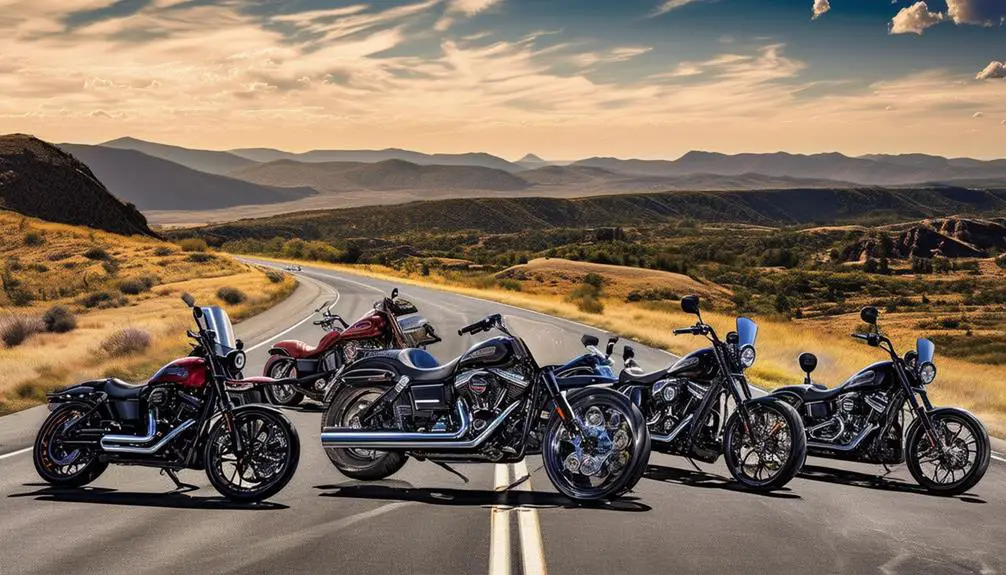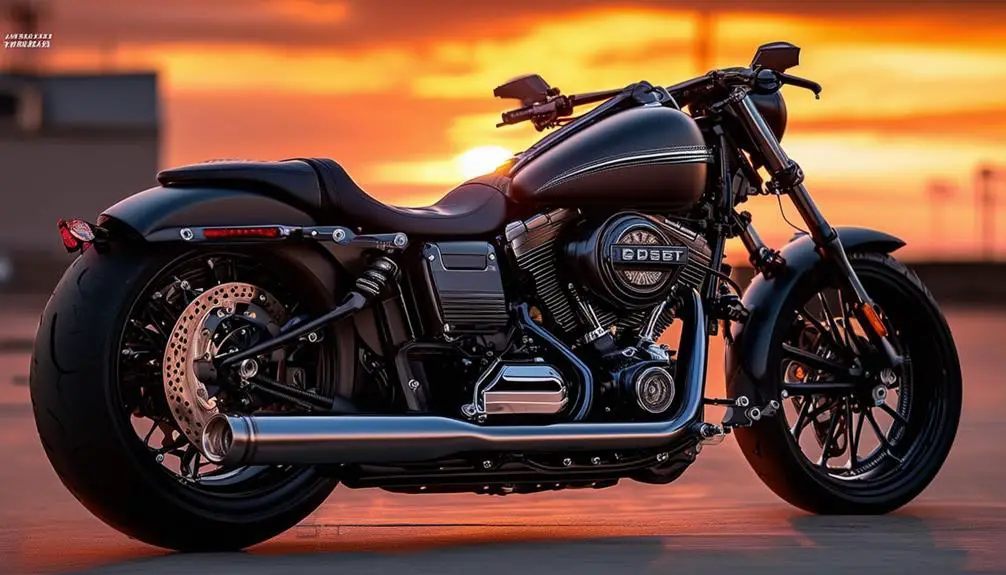When you’re looking to fine-tune the performance of your Harley-Davidson, you might consider aftermarket solutions like the ThunderMax tuner. This digital tuning tool has gained attention for its ability to modify various performance settings on your Harley. With the promise of enhancing torque and power, ThunderMax offers you a way to ride with a heightened sense of control and confidence.
Despite its advantages, including a self-tuning feature that adjusts the air/fuel mixture based on your riding conditions, users sometimes encounter challenges. From firmware updates to compatibility issues with specific bike models, understanding these problems is essential for maintaining peak performance and avoiding unexpected hitches. If you’re contemplating using ThunderMax or are currently experiencing difficulties, learning about common issues could be instrumental in helping you make the most of this advanced tuning technology. So, where do we start?
Related read: 1 Thundermax Tuner Review To Rule Them All (How Good Is it?)
Understanding the Thundermax Tuner
In your quest for achieving optimized motorcycle performance, the Thundermax Tuner emerges as a pivotal tool. It’s designed with advanced auto-tune capabilities to refine your ride’s power and efficiency catered to your personal preferences.
Design and Functionality
The Thundermax Tuner is a technological device that replaces your motorcycle’s stock Electronic Control Unit (ECU). This module is particularly aimed at enhancing your bike’s performance through a precise calibration of the air/fuel ratio, thanks to its integrated auto-tune feature. Here’s what you need to know about its installation and operation:
- Installation: Typically straightforward, you might be able to install the Thundermax Tuner without professional help. It comes with step-by-step instructions, and once installed, it begins to map the fuel system for auto-tuning.
- O2 Sensors: The module relies heavily on data from O2 sensors in your exhaust system to modify fuel mappings in real-time, ensuring your motorcycle is operating at prime efficiency.
Thundermax vs Power Vision Tuner Shootout
When considering a tuner for your motorcycle, you might find yourself comparing the Thundermax with the Power Vision Tuner.
- Thundermax Tuner: As a full ECU replacement, it constantly works in auto-tune mode to optimize your bike’s performance.
- Power Vision Tuner: In contrast, Power Vision is a flash tuner that modifies the existing ECU’s parameters.
| Feature | Thundermax Tuner | Power Vision Tuner |
|---|---|---|
| Type | ECU Replacement | Flash Tuner |
| Auto-Tune | Yes | No |
| Installation Complexity | Moderate | Easy |
| Tuning Approach | Real-Time | Pre-Configured Maps |
Both tools aim to improve your motorcycle’s performance, but the choice between the two will depend on your preference for real-time auto-tuning or a more set-and-forget approach with pre-configured maps.
Installation and Setup Procedure
In the realms of Harley Davidson customization, the right tuner can revolutionize your riding experience. This section takes you through the initial steps to install your Thundermax Tuner and how to tailor its settings for optimal performance.
Initial Installation Process
To kick off your journey towards a finely tuned ride, the first step is the installation. Ensure your motorcycle is turned off before you start. Here’s a streamlined breakdown:
- Locate the existing Electronic Control Module (ECM) on your Harley Davidson motorcycle.
- Disconnect the battery’s negative cable to prevent any electrical issues.
- Remove the stock ECM and replace it with your new ThunderMax tuner, ensuring all connections are secured properly.
It’s important during installation to follow the manufacturer’s guide meticulously to avoid common pitfalls. This process sets the stage for a tailor-made riding experience, blending control and performance.
Customizing and Auto-Tuning
Once installed, the magic of customization begins with the ThunderMax Tuner’s auto-tuning capabilities.
- Access the base maps provided by ThunderMax that best suits your bike’s configuration.
- The auto-tune feature begins working once you ride, dynamically adjusting the air/fuel ratio and ignition timing for your engine’s optimal performance.
Adjustments happen in real-time, learning from your riding habits and making tweaks that ensure you’re getting the most out of your Harley Davidson motorcycle. Remember to occasionally inspect and refine the settings through the setup software to maintain the balance between performance and longevity of your bike’s engine.
Read more: 5 of The Absolute Best Harley Davidson Tuner Options Today
Troubleshooting Common Thundermax Tuner Problems
When using the Thundermax Tuner on your motorcycle, you may encounter some issues that can affect performance. Understanding how to effectively troubleshoot these problems will ensure you get the best out of your tuner and motorcycle.
Resolving Connectivity Issues
If you’re facing connectivity issues with the Thundermax Tuner, the first step is to check your cable connections. Make sure that all connections are secure and in good condition. Occasionally, a loose or faulty connection can lead to communication errors between the tuner and the motorcycle’s ECM (Engine Control Module). Additionally, performing firmware updates on the tuner can resolve some connectivity problems, as these updates often contain fixes for known bugs.
Stalling and Throttle Response
Stalling or poor throttle response can be caused by the incorrect tuning of your motorcycle’s engine. Begin troubleshooting by checking the tuner’s settings and making necessary adjustments. Ensure that the throttle cable is properly connected and tensioned as a malfunctioning cable can significantly affect throttle response. You should also check for any vacuum leaks or issues with sensors that could be sending incorrect data to the tuner.
Error Codes and Engine Light
Seeing an engine light or receiving error codes can indicate a problem that needs immediate attention. Use diagnostic tools to read any trouble codes, which can guide you in pinpointing the exact issue. Common error codes can be related to sensors, fueling, or an overheating engine. Once you identify the code, refer to the Thundermax manual for specific solutions or contact customer support for troubleshooting assistance. Remember, some error codes may require you to reset your ECM before the problem is fully resolved.
Properly Optimizing Your Motorcycle’s Performance
When you’re seeking the pinnacle of engine performance for your motorcycle, focusing on enhanced fuel efficiency and horsepower through advanced software is key.
Enhancing Fuel Efficiency and Horsepower
Fuel efficiency and horsepower are not mutually exclusive; you can often improve both by optimizing your bike’s ECU settings. The use of an aftermarket auto-tuning unit like ThunderMax can lead to significant improvements. Here’s what you should consider:
- Air/Fuel Ratio (AFR) Adjustments: Auto-tuning metrics adjust the AFR in real time. This can translate to better fuel economy and more horsepower.
- Throttle Response: Finely tuned AFR contributes to a crisp, responsive throttle, enhancing your overall riding experience.
- Engine Load Conditions: As your riding conditions change, a good tuner optimizes settings to maintain an ideal balance between performance outcomes such as power delivery and fuel efficiency.
Advanced Software and Firmware Updates
Advanced software and regular firmware updates offer:
- Continuous Improvement: Frequent updates mean your bike’s tuning software stays up to date, adapting to various parameters for optimal engine performance.
- Data Logging: This feature allows you to monitor your engine’s performance, noting areas for improvement and ensuring your tuner is working effectively.
Remember, maintaining your motorcycle’s firmware is as critical as any physical adjustment you might make. It ensures your auto-tuner executes adjustments with the latest algorithms and data, which means you continue to get the best performance outcomes.
Comparative Analysis: Thundermax and Other Industry Options
When pondering an aftermarket tuning device for your motorcycle, you’re faced with a multitude of choices, each with its own merits and challenges. Here, we’ll compare Thundermax tuners to other major players like Power Commander and Dynojet to help you assess their compatibility, reliability, and value for your ride.
Power Commander and Dynojet Comparisons
Power Commander
- Compatibility: Works with the stock ECM.
- Features: Customizable maps; can adjust for specific modifications.
- User Reviews: Generally praised for improving throttle response.
- Performance Issues : May require dyno tuning for optimal setup.
Read more: 2 Titan Tuners: ThunderMax vs Power Commander Shootout
Dynojet Power Vision 4
- Compatibility: Flashes the original ECU.
- Features: Comes with preloaded tunes; ability to monitor performance.
- User Reviews: Lauded for ease of use and comprehensive data display.
- Performance Issues: Could be less intuitive for inexperienced users.
Read more: 1 Dynojet Power Vision 4 Review to Rule Them All – Talk Time
Thundermax
- Compatibility: Replaces the stock ECU entirely.
- Features: Self-tuning capability; adjusts in real-time.
- User Reviews: Appreciated for ‘fit and forget’ convenience.
- Performance Issues: Some instances of troubleshooting required.
Assessing Value for Money and Performance
Power Commander
- Cost: Moderate; offers flexibility without a hefty price tag.
- Performance: Can significantly enhance efficiency with proper tuning.
Dynojet Power Vision 4
- Cost: Higher; provides detailed data for fine-tuning.
- Performance: Offers a balance of user-friendliness and robust functionality.
Thundermax
- Cost: Considered a high-end investment for long-term use.
- Performance: Aims for a seamless experience with continuous adjustments.
Choosing the right aftermarket tuning device is a balance of finding what aligns with your technical skill and the specific needs of your motorcycle. Whether you prioritize a plug-and-play option like the Thundermax with its self-tuning feature or the customization opportunities that Power Commander offers, your decision should reflect both the compatibility with your bike and the type of riding experience you’re after.
Maintaining Your Thundermax Tuner To Avoid Issues
To ensure that your Thundermax Tuner continues to function effectively, regular maintenance is crucial. This section will guide you through essential upkeep routines and how to access professional support.
Routine Checks and Maintenance Tips
Installation: Ensure your Thundermax Tuner is properly installed. Incorrect installation can lead to issues with fuel injection and overall performance.
- Check the Battery connections regularly to make sure they’re secure and corrosion-free.
- Inspect the Air Filter:
- Clean it every 5,000 miles or as advised by the manufacturer.
- Replace if damaged or worn out to ensure proper air flow and fuel injection.
Technological Device Maintenance:
- Update the device firmware periodically to ensure you have the latest features and fixes.
- Remember that maintaining your tuner is more than just physical care; keeping it technologically current is equally important.
Technical Support and Warranty
Technical Support:
- If you encounter an issue, reach out to the technicians for assistance. Often, they can provide quick solutions that you can implement yourself.
- Support for customers is usually available through various channels such as phone, email, or online forums.
Warranty:
- Keep your warranty details handy. Understanding your warranty period and what it covers can save you time and money.
- Register your product if necessary to activate the warranty. This could be critical for receiving support or a replacement if needed.
By staying attentive to these aspects, you’ll be able to keep your Thundermax Tuner in top condition and enjoy a seamless riding experience.
Frequently Asked Questions
When it comes to getting the most out of your ThunderMax tuner, you may have several questions. Let’s dive into some common queries to ensure you have the smoothest experience possible.
What are common issues experienced with the ThunderMax tuner?
Commonly reported problems with the ThunderMax tuner include difficulties with firmware updates and compatibility with certain motorcycle models. It may also affect torque and power settings, sometimes leading to unexpected performance changes.
How can I troubleshoot a VIN error on my ThunderMax device?
If you encounter a VIN error, ensure that you’re entering the correct VIN for your motorcycle. Double-check for any typographical mistakes. If the issue persists, you may need to contact ThunderMax support for further assistance.
Is there an impact on the warranty when installing a ThunderMax tuner?
Installing a ThunderMax tuner may void your motorcycle’s factory warranty, especially if the installation is not done correctly or if the tuner causes damage to your bike. It’s important to consider this potential risk before installation.
Can the ThunderMax tuner fully replace the motorcycle’s factory ECM?
Yes, the ThunderMax tuner is designed to be a complete replacement for the stock Electronic Control Unit (ECU). It becomes the new “brain” of your motorcycle, controlling its fuel injection and ignition systems.
What steps should be taken if the ThunderMax tuner is not responding?
First, check all connections to ensure they are secure and not corroded. Next, make sure that your battery is fully charged. If the device still fails to respond, a reset or firmware update might be necessary.
How to resolve connectivity problems with the ThunderMax tuner?
For connectivity issues, verify your tuner’s software is up to date. Also, check your USB or Bluetooth connection to ensure a stable link between the device and your computer or smartphone. If problems persist, consult the user manual or reach out to customer support.








Leave a Reply
You must be logged in to post a comment.